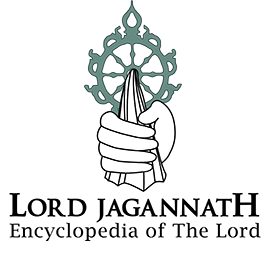Daru – its meaning and significance in Sri Jagannath culture
Sometimes the question arises – why the idol of Lord Jagannath is made of wood instead of stone or metal and called “Daru”. In one of the chapters of the Skanda Purana, Brahma explains to the king Indradyumna the reason and the mystery behind it.
When the idols of Lord Jagannath, Balabhadra, Goddess Subhadra and Lord Sudarsan were installed in the newly built Jagannath temple, the king noticed that the four idols merged into one idol. He was stupefied and asked Lord Brahma to explain to him the mystery behind it.
“O king!” replied Brahma, “You must not mistake it for an ordinary idol of wood. It is really the form of Parambrahma [Lord Almighty]. That which tears or removes as well as gives is Daru. Lord almighty is called Daru as it is essentially His nature to remove suffering and bestow absolute happiness.”
Brahma also explained the close relationship between a word and its meaning. He said that they are inseparable since one compliments the other. Daru literally refers to ‘wood’ and ‘generous’. Therefore, Lord almighty has rightly manifested himself in the form of a wooden idol in order to justify the meaning of the word Daru.
Brahma also added a short explanation on the relationship between Veda and Lord. He said that there is basically no difference between Sabda Brahma [manifestation of the absolute in form of sound] and Parambrahma. At the time of dissolution they become one. There is a difference in their usages only as long as the creation exists. This explains why the four Vedas are both the signifier and the signified. Lord Balabhadra is Rig Veda, Lord Jagannath is Sama Veda, Subhadra Devi is Yajur Veda and Sudarsana Chakra is Atharva Veda. The vedas appear to be four in a differentiating perspective otherwise they are but one. Therefore, one must not restrict his idea about God to an ordinary number since He is beyond the scope of all logic and mathematics.
